In need of tips for your first time in Peru? We are here to help with what you’ll want to know ahead of your first visit to Peru.
As it is a Spanish-speaking country in South America, the idea of visiting Peru might seem intimidating at first, particularly if you don’t speak the language. But it’s definitely possible to have a smooth first time in Peru with proper preparation.

After spending 2.5 months traveling in Peru, our guest author, Sean Lau, is here to share his experiences so you can have the knowledge he wishes he did when he started his trip.
Below we have outlined the important things to know before visiting Peru, such as how to prevent altitude sickness, currency and money, transportation, safety, and the best things to do in Peru!
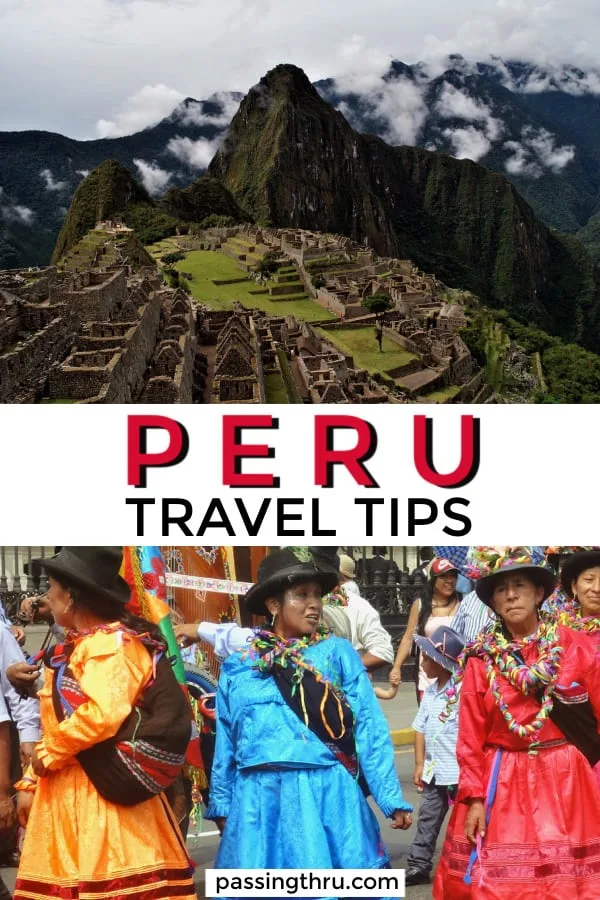
How To Prevent Altitude Sickness In Peru
If you are traveling in Peru, you must familiarize yourself with the altitude. Many cities in Peru (such as Cusco, Arequipa, and Huaraz) are located around 3,000 meters above-sea-level, an elevation that can easily give you altitude sickness. Most hikes in Peru are even higher, with the majority somewhere between 4000 meters to 5000 meters above-sea-level.
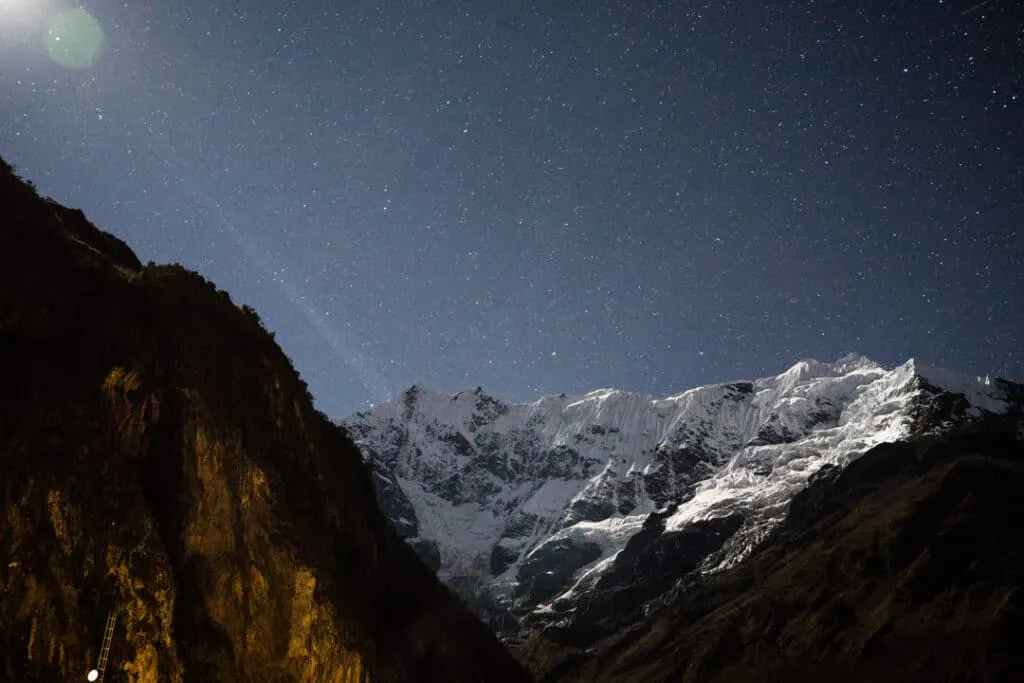
To prevent altitude sickness in Peru, you have to slowly acclimate to the elevation. For example, when you first arrive in Cusco (3400m high), don’t jump into any of the activities immediately. Stroll around town and take it slow so your body can adjust.
Being able to stroll around Cusco the first day you arrive without feeling winded is an achievement in itself. Cocoa leaves are also great for helping you to acclimatize and they can be found in markets or general convenience stores.
Pharmacies in Peru will usually sell altitude sickness medicine for those who have trouble acclimatizing. When you are deciding on where to stay in Cusco, make sure you select a hotel with oxygen-enriched rooms. Here are some medically professional tips for acclimatizing.
How To Handle Money In Peru?
The sol is the currency of Peru; it is also commonly written as PEN. 1 USD is equivalent to about 3.5 Peruvian soles and 1 EUR is worth about 4.2 soles (at the time of writing). When you are in Peru, you must carry cash with you. Most places outside of Lima and Cusco will not accept credit cards, and the places that do are usually targeted towards foreigners. If you would like to eat at a local eatery and experience local flavors, you must bring cash.
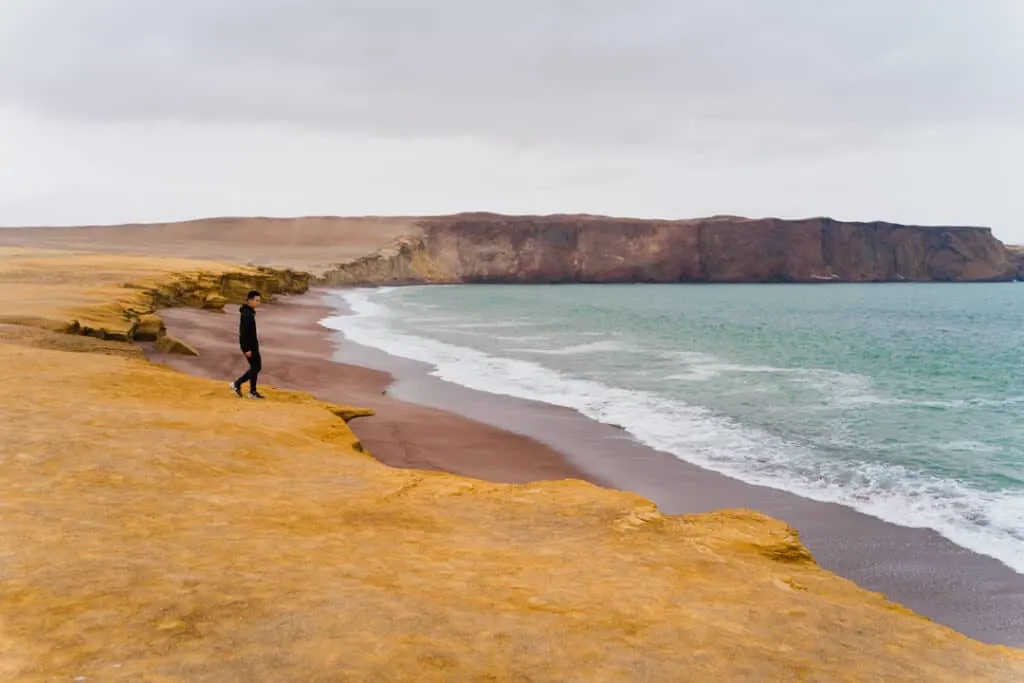
The best way to get Peruvian soles is through an ATM in Peru because the conversion rate is based on VISA, Mastercard, or the type of card you have. It is an international rate so you won’t be getting ripped off unlike most local currency exchange places. Simply tell your bank that you are traveling to Peru and they will unlock your card, allowing you to withdraw money in Peru. Otherwise, you run the risk of your card getting blocked!
The two most popular banks in Peru are BCP and BBVA. These two banks have the utmost security and are safe to withdraw money from.
Transportation In Peru
Spanning over 1.2-million square kilometers, Peru is a massive country. Luckily for you, Peru’s public transportation and infrastructure are decent (by South America standards).
If you are traveling in between cities, Peru has a variety of privately-owned bus companies serving routes all over the country. While hearing the word “bus” usually strikes fear into any South American traveler, the buses in Peru are surprisingly nice.
Amenities such as reclining seats, full-functioning bathrooms, onboard entertainment (some in the form of your own personal TV), and even food are served on mid-range to luxury buses. More economical options are also available, but we recommend you to spend a little extra for the added comfort and security.
Traveling by bus can be long and tiring, and the winding roads on the edges of mountains might be too much for some people. The drivers are usually driving faster than they should, too. For these reasons, flying might also be a great option for you.
If you have a short trip in Peru and want to see both Lima and Cusco, you will need to fly. The bus ride between the two cities takes 24 hours but is filled with amazing scenery of the Andes. Flights are typically more costly than buses especially if you have lots of luggage. Try to pick domestic airlines such as LATAM as they tend to be more affordable.
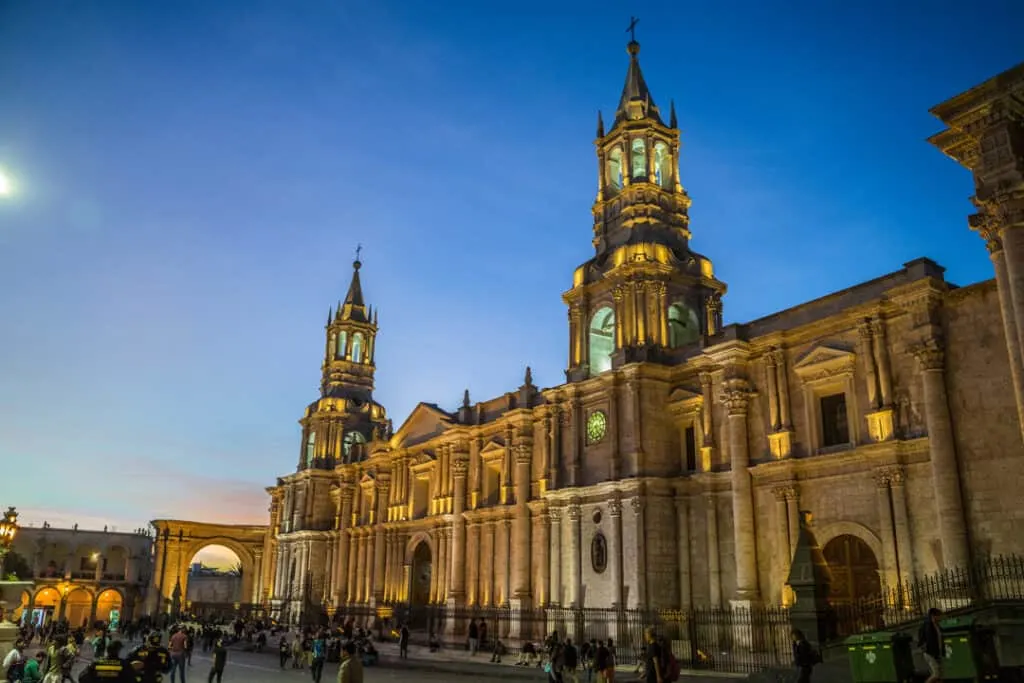
Public transportation inside a city is usually limited unless you are in Lima, the capital of Peru. This makes it hard to do any DIY tours but tours aren’t expensive in general. If you want to get around the cities, use Uber, especially in Lima. We heard some taxis are dangerous in Lima. Uber is your best friend when you are traveling in Peru, doesn’t matter if you are in Cusco, Lima, or Arequipa.
How To Stay Safe In Peru
As Peru is a fairly poor country, you must be careful when you are there. Typically, armed robberies are uncommon but you must watch out for petty crimes such as pickpockets. Keep an eye out on your surroundings, especially if you are traveling alone and/or at night. Bars and clubs are quite common for pickpockets, as thieves can easily prey on intoxicated guests (not just foreigners).
When you are traveling by bus in Peru, keep an eye on your belongings. If you are doing an overnight bus, make sure your things are secured before you go to sleep. It is not uncommon for thieves to go into your bags when you are asleep. A padlock on your bag will usually deter them, but we’ve heard thieves cutting into bags to steal. Keep your belongings close to you.
The Best Things To Do In Peru
Machu Picchu – A Must for Your First Time in Peru
Machu Picchu is unquestionably the biggest attraction in Peru. This historic Inca ruin is one of the most well-preserved ruins in Peru because the Spaniards never discovered Machu Picchu, or Old Mountain in English. When news of the Spanish arrival, Incans living in Machu Picchu left to aid in the war and never returned. Machu Picchu was then left untouched for hundreds of years before its discovery.

There are many ways to visit Machu Picchu, and none as famous as the classic Inca Trail. The 4-day Inca Trail uses some of the same routes the Incas used to take, and along the way hikers will find many old Inca settlements. There is simply no better way to explore Peruvian heritage than the Inca Trail itself.
If you wish to partake in the Inca Trail, you must make your reservation well in advance. As efforts to prevent foot erosion, a limited number of hikers are allowed to be on the trail per day. If you aren’t able to reserve for the Inca trail, there are many other treks to Macchu Picchu, such as the 5-day Salkantay trek and the Lares Trek.
Colca Canyon – Somewhat Off the Beaten Path
Located near the city of Arequipa (over 8 hours from Cusco), many travelers don’t get the chance to see Colca Canyon, the second deepest canyon in the world. At a depth of 3,270 meters deep, the Colca Canyon is twice as deep as the Grand Canyon in the United States.
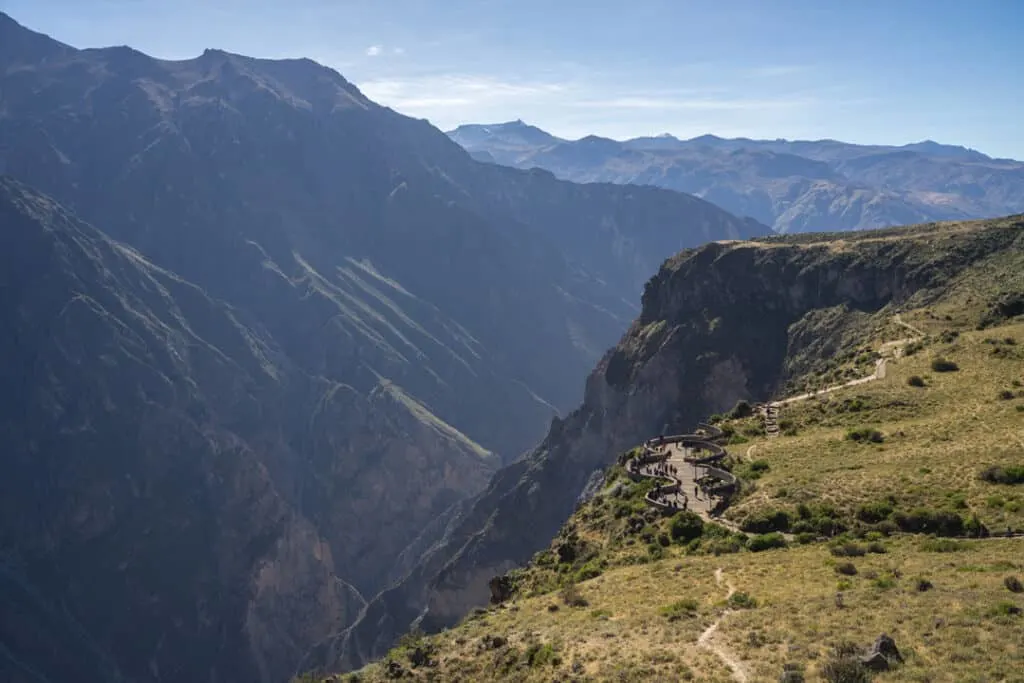
Because of its remoteness, guided tours are the best way to explore this beautiful giant. The duration of the tours ranges from one to three days, with the two-day tour being the most popular.
The 2-day Colca Canyon tour starts at the top of the Colca Canyon, where you will have some time to admire its beauty and the condors that inhabit the area. Condors are seen as sacred creatures that represent Hanan Pacha, or the heavenly world in Quechua (indigenous people in Peru).
After admiring the landscapes, you will descend into the bottom of the canyon, where you will spend your first night in the Sangalle Oasis. With little to no people living at the bottom of the canyon, nature’s beauty is enhanced in solitude, and the lack of light pollution makes the stars shine extraordinarily in the night sky. When we visited, we were able to see the Milky Way with our naked eyes!
The following day you will rise before the sun to make your way up to the top of the mountain. During the 4-hour hike, the trail isn’t the only thing that will take your breath away, but the jaw-dropping sunrise and scenery as well. Once you reach the top, you will have your breakfast before heading back to Arequipa. The entire 2-day hike was moderately difficult but worth the scenery!
Lima – Outstanding Cuisine and Coastal Location
When visiting Peru, a lot of travelers will skip Lima, the capital of Peru. Why? Because it is just so far from the main attractions of Peru such as Machu Picchu and Cusco. Like we have mentioned, a 24-hour bus ride separates these two most touristy cities in Peru.
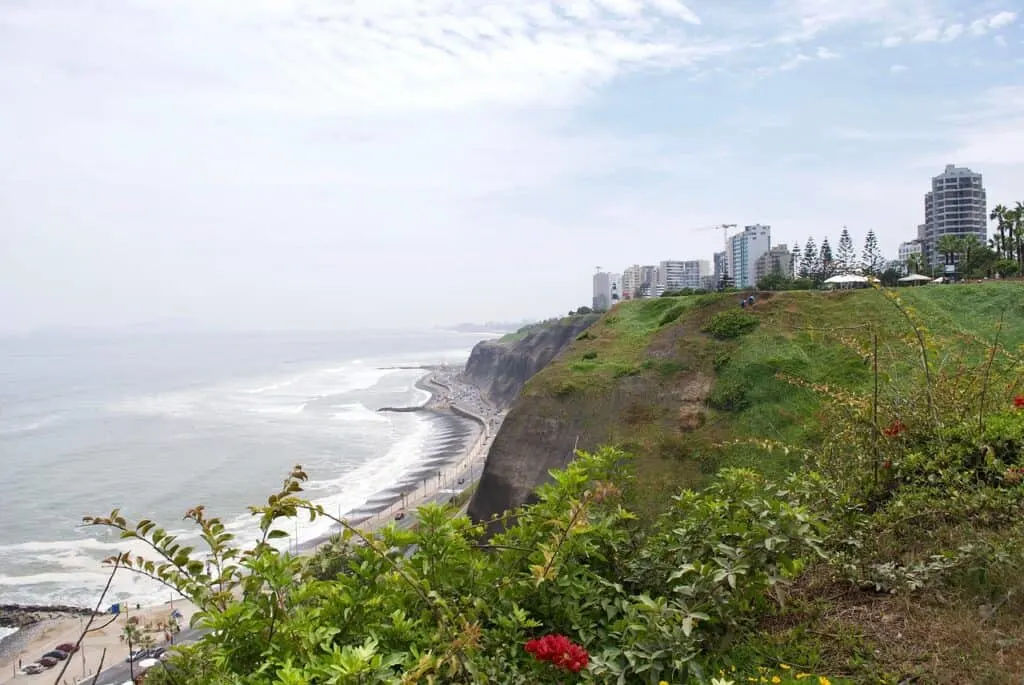
However, Lima, otherwise known as the City of Kings, has something that Cusco does not – long stretches of dramatic cliffs facing the Pacific Ocean and some of the finest dining options in the world.
Two of the most influential neighborhoods in Lima, Miraflores and Barranco, are situated right on the Malecon, a ~10km-long elevated boardwalk overlooking the Pacific Ocean. The sunset on the boardwalk is spectacular if you are lucky enough to see one (Lima is cloudy most of the year).
In these neighborhoods, you will find some of the most delicious Peruvian dishes, such as ceviche (the national dish of Peru made primarily of raw fish cooked in lemon juice), chicharron, and many more. Peruvian gastronomy is famous worldwide.
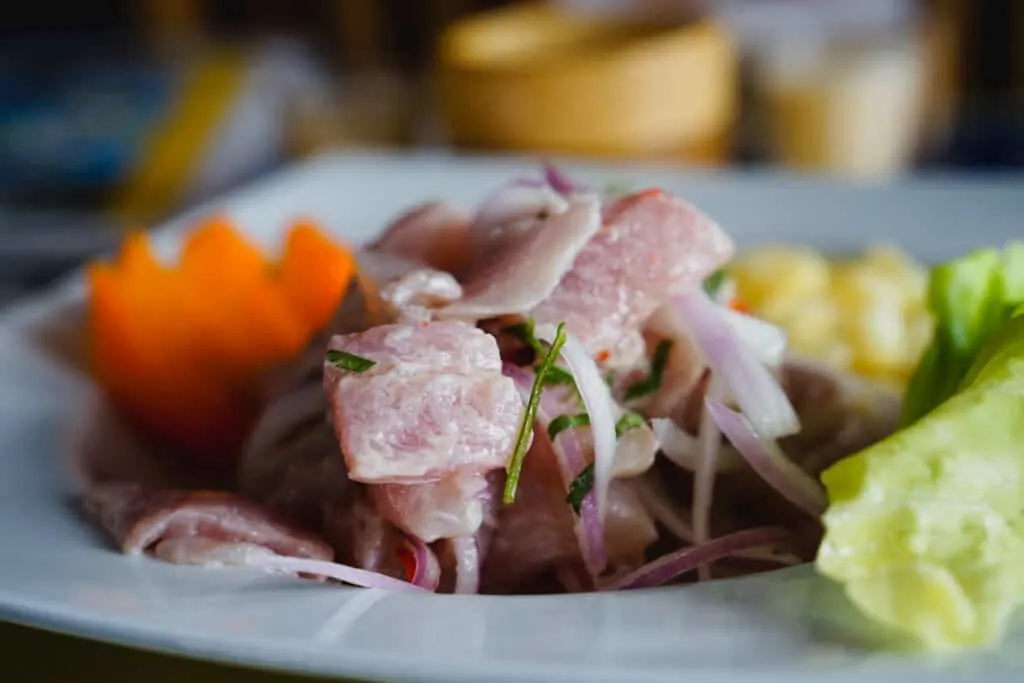
In fact, two of the top 50 restaurants (Maido and Central) in the world are located in Lima, so don’t forget to give them a try when you are visiting Lima. They are extremely affordable considering they are two of the top 50 restaurants in the world.
Rainbow Mountain – Newly Discovered Attraction
Located in the Andes mountain range, Peru is in no shortage of alpine peaks. One of the most popular mountains in Peru is the Rainbow, otherwise known as Vinicuna or Montana de Siete Colores. Surprisingly, this attraction in Peru wasn’t discovered until 2015.
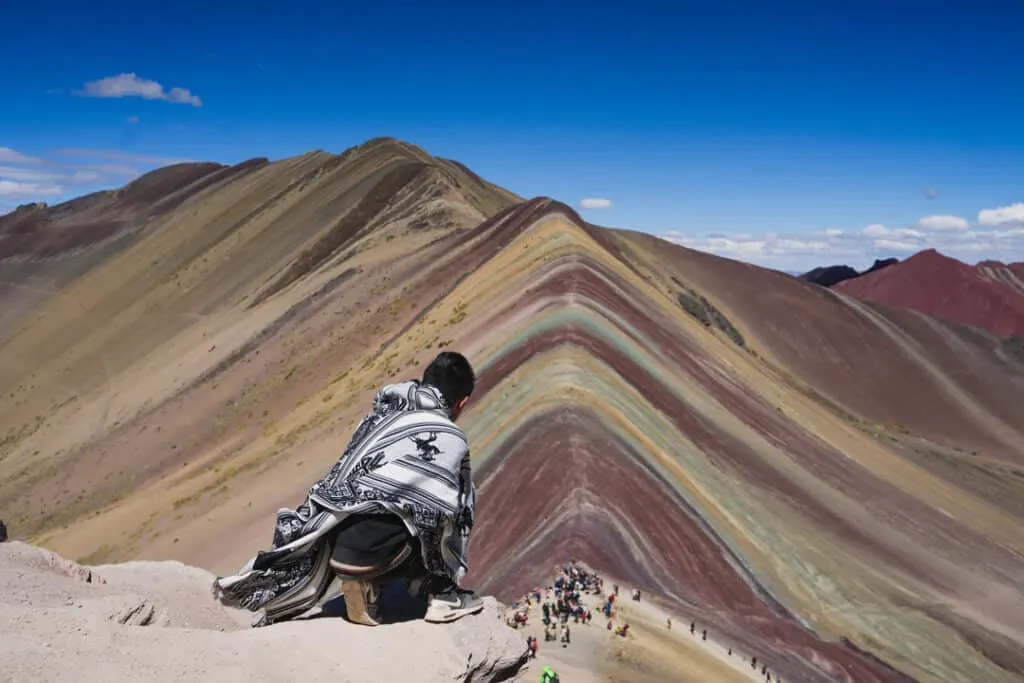
Rainbow Mountain was buried underneath a layer of snow, but the snow has gradually melted away, eventually showing its true (rainbow) colors to the world. Researchers believe that global warming caused the melting of the snow.
Is this for good or for bad? That is up to you to decide. But what isn’t debatable is the natural beauty of Rainbow Mountain. The different colored minerals have left streaks of red, gold, yellow, turquoise, and a variety of other colors on Rainbow Mountain. If we haven’t seen the Rainbow Mountain ourselves, we would’ve totally thought that the colors were photoshopped!
Rainbow Mountain tours are readily available in Cusco but be properly acclimatized before hiking it. Though only 3 hours of hiking in total, you start hiking at 5,000 meters and reach a peak of 5,200 meters. That is the same elevation as some of the highest mountains in the United States.
Huacachina Oasis – A Surreal Desert Haven
Huacachina Oasis is slowly becoming one of the best places to visit in Peru and it is not difficult to see why. As the only Desert oasis in South America, visiting the Huacachina Oasis is a surreal experience. With only one tiny road connecting to the city of Ica, Huacachina Oasis is a small haven in the middle of a desert, surrounded by massive sand dunes. While you can spend hours just admiring the dunes or going for walks out into the desert, the most popular things to do in Huacachina are sandboarding and dune bashing.
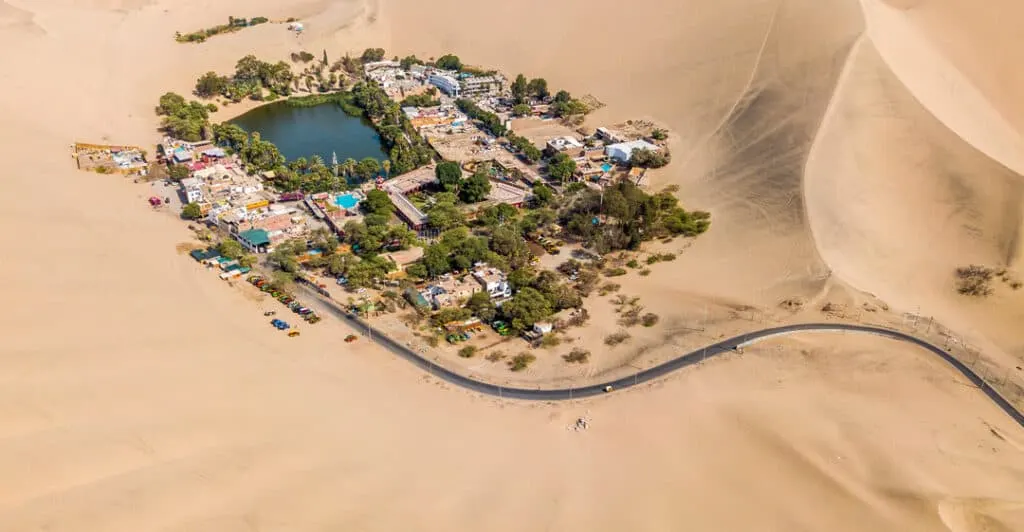
Though there are tours that include both sandboarding and dune bashing, we liked sandboarding so much we decided to rent our own boards and just slide down the silky smooth dunes ourselves. Was it worth it? Heck yeah! Sandboarding is incredibly fun and doesn’t require any experience.
However, if you want to do dune bashing, you must be on a tour. Luckily, tours can be easily found in the small Huacachina Oasis.
Don’t forget to put Huacachina on your Peru itinerary!
Cusco – Inca and Spanish Heritage
No Peru trip is complete without a visit to Cusco, the old capital of the Inca empire. Stroll along the cobblestone streets and you will inevitably stumble upon old Inca buildings, many of those are still in use today. In Cusco, you will usually find two types of buildings, ones built by the Incas and ones built by the Spaniards. Surprisingly, the ones built by the Incas are much more spectacular.
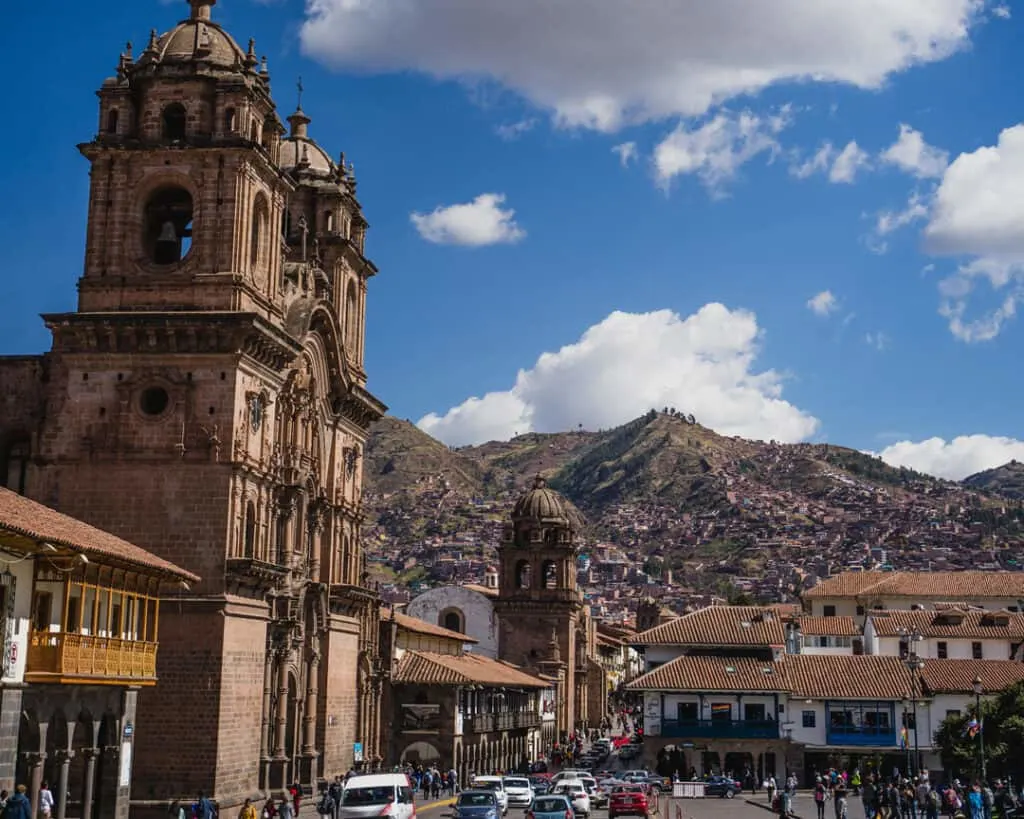
Cusco is also the home to Sacsayhuaman, pronounced sexy woman but with a deep tone and a foreign accent (we promise!). Sacsayhuaman is one of the many Inca ruins located near Cusco and provides a great introduction to the many different Inca ruins you will be seeing on your trip. A nice little walk from the center of Cusco, it is a great place to visit and acclimate to the altitude at the same time.
Though super touristy, Cusco is our favorite city in Peru. From the historic center to the indigenous people to ancient buildings, Cusco is like a place that has frozen in time. If you love culture, heritage, or history, you will fall in love with Cusco.
This concludes our first-timer guide to Peru. We hope our Peru travel tips have given you a better understanding of how to plan the perfect trip to Peru!
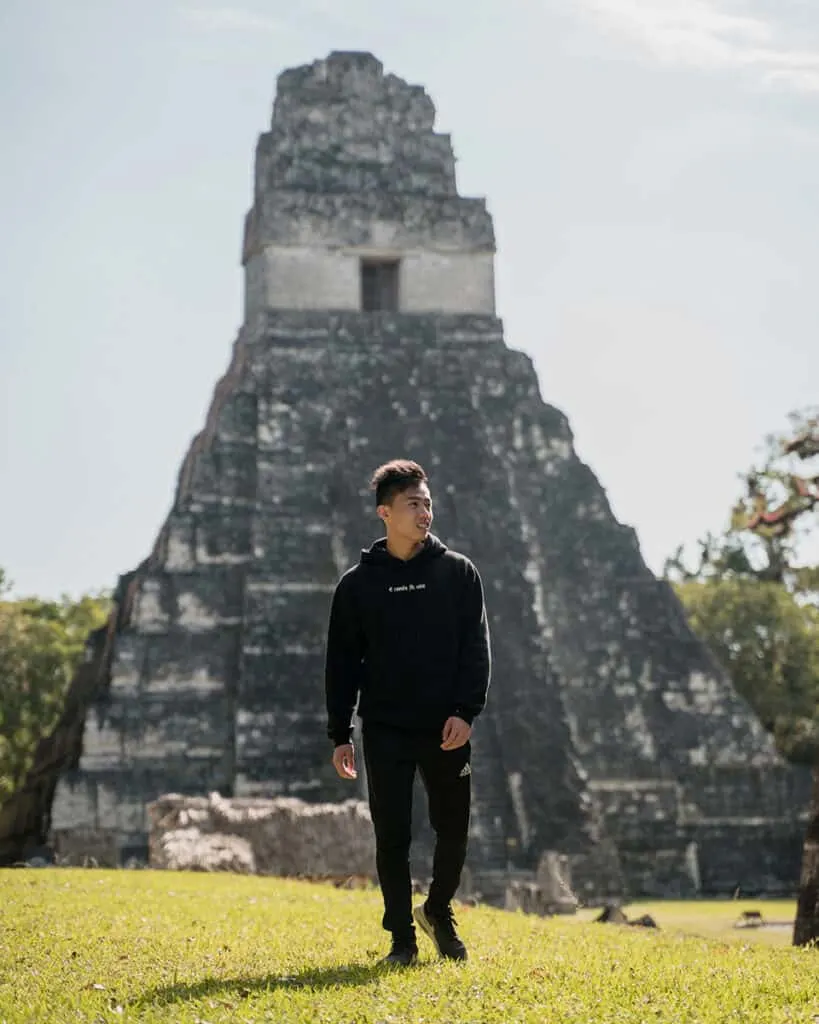
Author Bio: Hey, I am Sean of LivingOutLau. Since 2018, I have been on a journey to experience the world through different cultures. With my words and photography, I hope to inspire my readers to travel more and enjoy diversity in heritage. On LivingOutLau, you will find carefully curated travel guides, tips, and photos to help plan your next trip!
Tips for Trip Success
Book Your Flight
Find an inexpensive flight by using Kayak, a favorite of ours because it regularly returns less expensive flight options from a variety of airlines.
Book Your Hotel or Special Accommodation
We are big fans of Booking.com. We like their review system and photos. If we want to see more reviews and additional booking options, we go to Expedia.
You Need Travel Insurance!
Good travel insurance means having total peace of mind. Travel insurance protects you when your medical insurance often will not and better than what you get from your credit card. It will provide comprehensive coverage should you need medical treatment or return to the United States, compensation for trip interruption, baggage loss, and other situations.Find the Perfect Insurance Plan for Your Trip
PassingThru is a participant in the Amazon Services LLC Associates Program. As an Amazon Associate I earn from qualifying purchases.
To view PassingThru’s privacy policy, click here.
